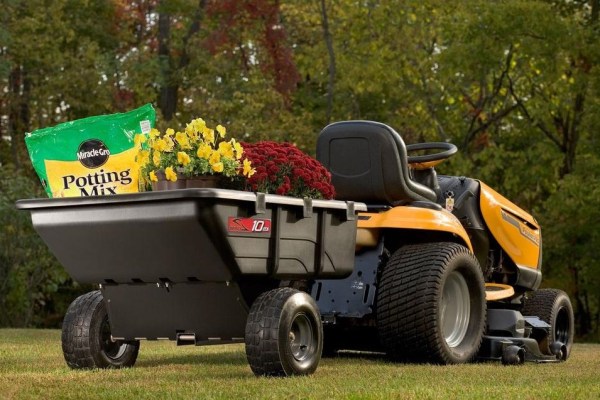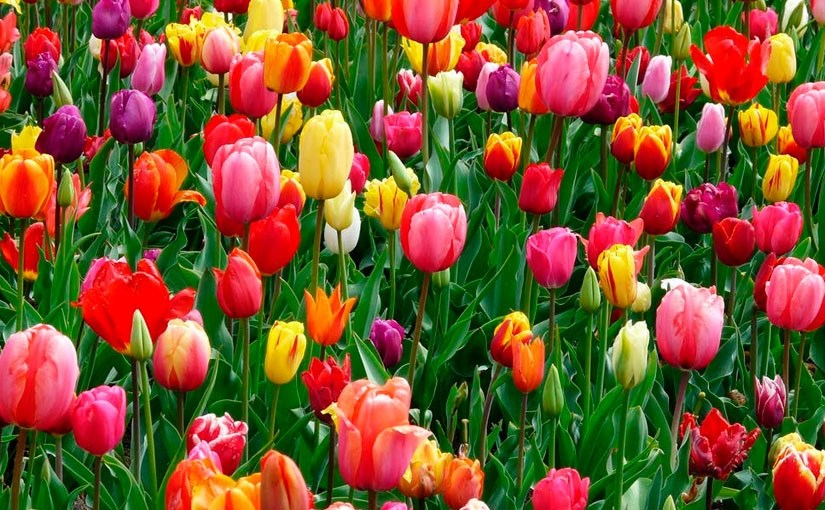Are you planning to add fall bulbs to your flowerbeds, landscapes, and along your borders? Then you need to have a plan of where you’re planting them as well as how they’ll fit in with your overall landscape design.
Fall bulbs do well when planted in soil that’s between 40° – 50°F or six weeks before the first freeze.
Why Plant Bulbs for Next Spring?
It’s hard to believe that what you plant now will overwinter and pop out of the soil bringing you joy next spring. All the while, it’s therapeutic to plant when things are dying. You’re investing in next year’s spring blooms.
Here are four reasons why you want to plant fall bulbs:
- If you don’t like winter, you’ll be encouraged when your bed of snowdrops bloom in late winter or early spring.
- Daffodils, tulips, and crocuses give you a hope of spring, color, and life. Depending on where you live, your fall bulbs will bloom in time for Easter or Passover.
- Fall bulbs that bloom in spring brighten your landscape when trees and shrubs still don’t have their leaves. You might even have snow on the ground when glory of the snow and crocuses start pushing through the frozen ground.
- If you enjoy gardening and being outside in September, October, or November, then planting bulbs will be a regular part of your gardening routine until the ground freezes.
Learn more: Does your lawn get swampy every time it rains? Then, you need to read this blog post.
10 Tips for Planting a Palette of Color This Fall
It’s not difficult to plant bulbs. However, you shouldn’t just buy a bag of hyacinth bulbs from your local garden center or big box store. Instead, you need to start with a plan deciding where you’ll plant your bulbs.
Here are 10 tips for painting a palette of color for spring:
- Start with a garden design even if you just sketch clusters of plants. You need to take your entire landscape and decide which areas would benefit from some late winter color.
- You should also consider the colors, sizes, and leaves of each bulb you plant. Where will these plants look best in your landscape?
- You should also employ some color theory in your design. Some color design includes
- Harmonious color won’t overwhelm. Instead, these colors soothe. Harmonious colors create harmony, movement, and continuity. On the color wheel, the harmonious colors are next to each other.
- When looking at a color wheel, complementary colors are positioned across from each other, such as reds, greens, and blues. Complementary colors liven up your landscape with bold reds and vibrant greens.
- Monochromatic color doesn’t have to be boring just because you use the same color for the entire flowerbed. All colors have different hues to break up a solid color into a delightful garden. Use various tones and shades.
- Foliage plays an essential part in your flowerbeds and landscape. You want to add contrast and variety—such as variegated leaves—to give a burst of color in a shaded area.
Read more: How Often Do You Need to Aerate Your Lawn?
- Pastels and muted colors add softness to your landscape. Pastels and muted colors look best in a part shade or a full shade garden to avoid looking washed out. You can also plant these colors further out in your beds to give the illusion of space.
- Primary colors, blue, yellow, and red. These bright colors liven up a landscape with primary colors as well as colors you create.
- White as a theme. As you know, white comes in many different hues. Fill a flowerbed with bulbs that come up with white blossoms. You don’t want to have a white flowerbed in full sun, though, because it’ll look washed out in the bright spring sunshine.
- Warm and cool colors. Use both warm and cool colors to dot your landscape. Yellows and reds provide a bold contrast while blues and greens cool it down.
- Now you need to buy your bulbs. Inspect any bulbs before you buy to make sure that they’re not moldy or rotted. According to the article, “6 Must-Read Tips for Planting Bulbs in the Fall,” bulb-buying season starts in mid-summer and goes into the fall.
- You should prep the soil before you plant any bulbs. You also need to pull weeds, add compost, rake the soil, and add sand if you have clay soil. Don’t plant your bulbs in soil that ponds every time it rains. The excess water will rot your bulbs.
Also, your bulbs need at least six hours of sunlight. You can still plant daffodils, crocuses, and tulips around your favorite tree since it’ll still be leafless. However, you don’t want to plant your bulbs in an area that’s shaded by your house or another outbuilding.
- You need to make sure that you have the right gardening tools. You’ll need a trowel and a bulb planter that helps you place bulbs deep into the soil. You may need a gardening fork and a digging shovel too.
- You want to plant your bulbs at least three times as deep as the bulb is tall. And you’ll sow the bulb with the nose facing up and the roots (or root hairs) pointing down.
- The ground should be between 40°-50°F because fall bulbs need a cold start. If you’re planting in zones 8-11, you want to put your bulbs in a paper bag and refrigerate them for 6-10 weeks before planting them. Bulbs need cooler temperatures over a specified time.
One word of caution: Don’t put your bulbs in the fridge drawer with your fruit or vegetables. Fruit and veggies emit gasses that kill the plant inside the bulbs.
- For the fall, you only plant cold-hardy bulbs. In the spring, you’ll plant warm bulbs.
- Put mulch over your planted bulbs. Mulch will protect your bulbs by regulating the soil temperature and providing some nutrition as it breaks down.
Top 11 Winter Hardy Bulbs to Plant This Fall
There are plenty of magazines and websites dedicated to planting fall bulbs. If you’re looking for exotic bulbs, check out GardenDesign.com. According to GardeningKnowHow.com, the following winter-hardy bulbs should be on your planting list:

- Allium
- Bearded iris
- Crocus
- Daffodil
- Daylilies
- Fritillaries
- Glory of the snow
- Hyacinth
- Siberian Iris
- Snowdrops
Brinly-Hardy Helps You Plant Bulbs This Fall
You know how to plant bulbs in fall, not you might need some tools to help get the job done! If you’re an ambitious gardener, you may plant hundreds of bulbs throughout your property. So, you need garden attachments, such as Brinly’s tow-behind cart to haul your bulbs, compost, and mulch to the beds you’ll be working in.
You can find Brinly-Hardy lawn care and garden attachments at these retailers. If you have any questions about your Brinly lawn care or garden attachment, contact customer service at 877-728-8224 or fill out our contact form.
Sources:
ColorMatters.com, “Basic Color Theory.”
Lowes.com, “How to Plant Bulbs.”


